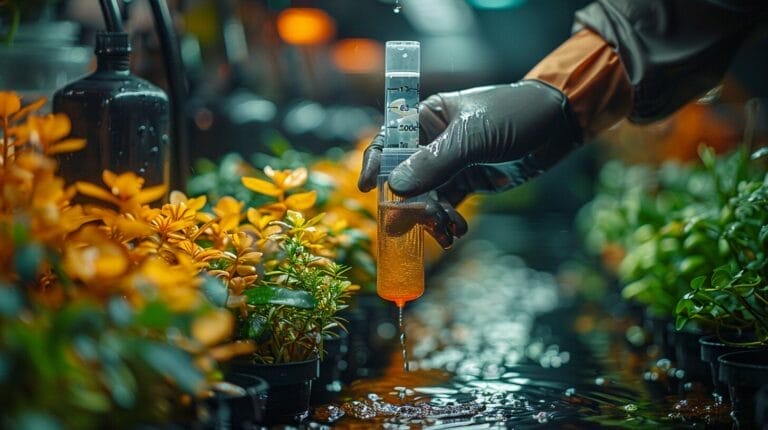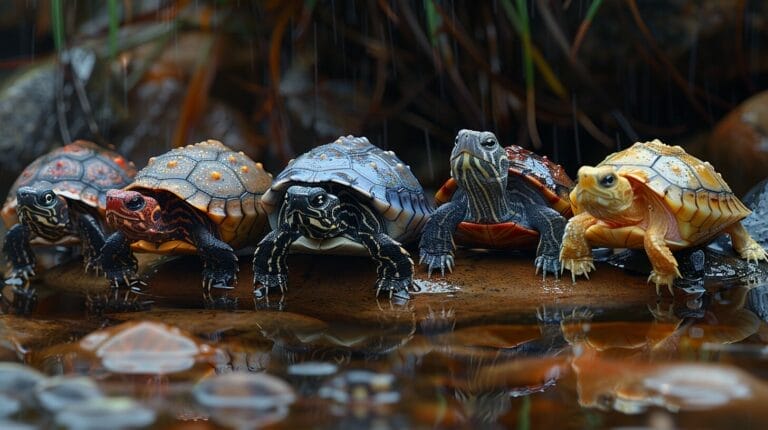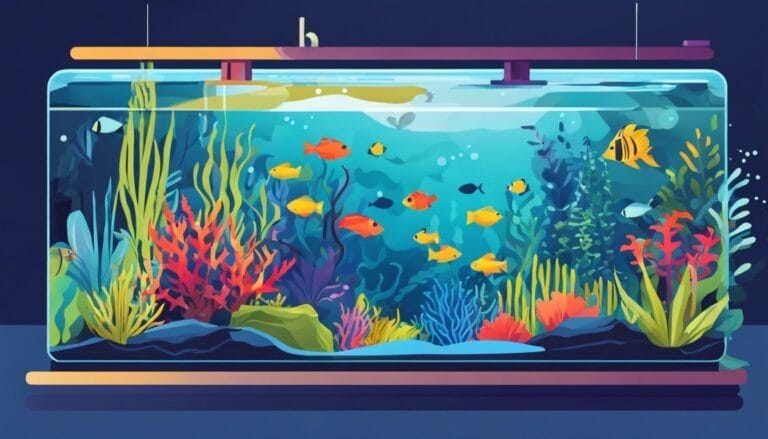Best Plant for Betta Fish: A Guide to Thriving Aquariums
Just as a tree is essential for a bird’s nest, the right plants are crucial for a thriving betta fish aquarium.
We’re here to guide you through the green world of aquatic plants, especially live aquarium plants, helping you understand their importance to your betta fish.
Selecting the perfect plant doesn’t just enhance your tank’s aesthetics with gravel—it also significantly contributes to maintaining your fish’s health and happiness on the surface of the water.
So, what is the best plant for your betta fish, and how can you ensure it thrives in your aquarium?
Let’s navigate these interesting waters together.
Key Takeaways
- Live plants in a betta fish tank provide numerous benefits, including oxygenation, stress reduction, and mimicking their natural habitat.
- When choosing aquatic plants for betta fish, consider their compatibility, growth rate, light and temperature requirements, and any potential drawbacks.
- Java Fern, Anubias, Betta Bulb, lily pads, hardy plant, and Marimo Moss Balls are excellent plant choices for betta fish tanks, offering beauty, simplicity, and interaction.
- Proper care and maintenance, such as quarantining new plants and providing adequate lighting and temperature, are essential for keeping live plants thriving in a betta fish tank.
Understanding the Importance of Live Plants in a Betta Fish Tank
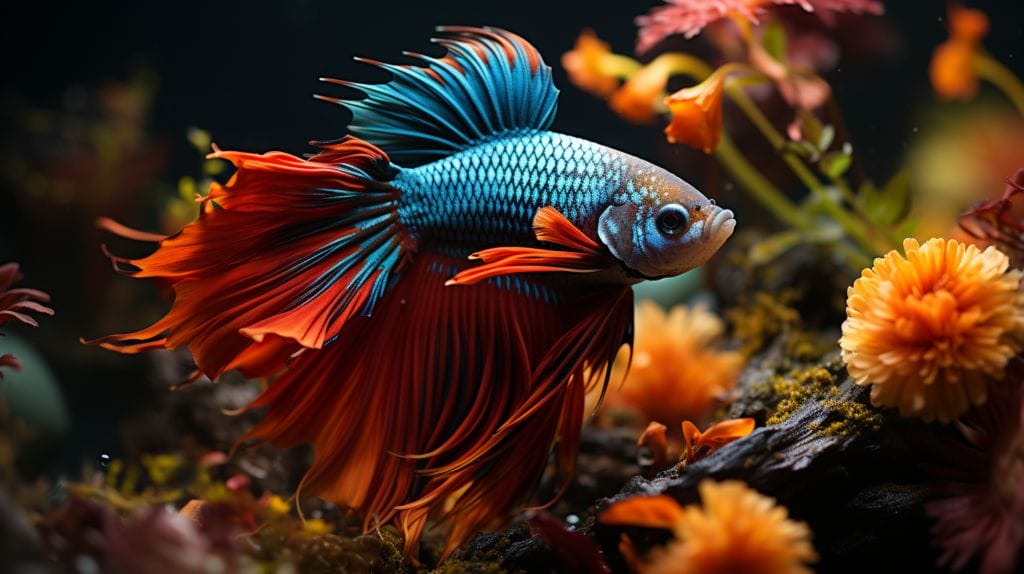
Let’s delve into the significant role live plants play in a betta fish tank, enhancing not just the aesthetics but also the health and behavior of your betta fish. These plants are more than mere decorations, they’re an integral part of the mini-ecosystem within your tank, providing necessary nutrient uptake.
Live plants, or even hardy plastic plants, in a betta fish tank do a marvellous job of oxygenating the aquarium water, which is a vital element betta fish need to thrive. They also absorb harmful nitrates, providing a cleaner, healthier environment for your fish. This is a freedom that fake plants simply can’t offer.
Furthermore, live plants provide shelter and a sense of security to your betta fish. They can hide among the plants, reducing stress and promoting more natural behavior. This enhances not just their health, but also their overall happiness.
Choosing the Right Aquatic Plant for Your Betta Fish
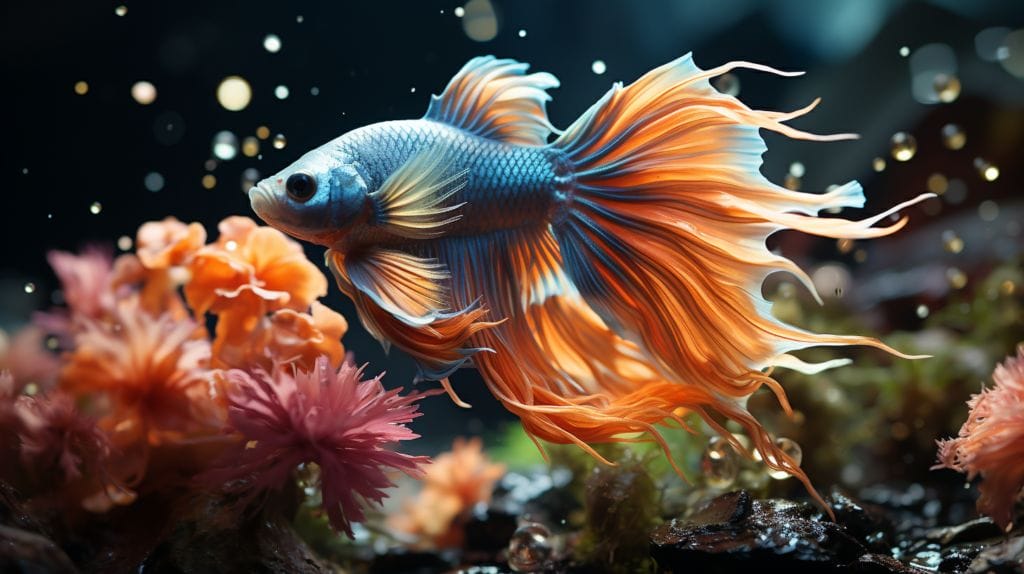
Now that we’ve understood the importance of live plants in a betta fish tank, it’s essential we take a look at how to choose the right aquatic plant for your betta fish. This choice offers you the freedom to create an environment that suits both your aesthetic preference and the health needs of your betta fish.
- Finding the best plant for betta fish involves considering a few key factors. First, the plant’s compatibility with the betta fish’s needs is paramount. For instance, betta fish prefer plants with broad leaves for resting and hiding.
- Secondly, think about the growth rate of the species of plants you’re considering. Some plants grow rapidly and could overtake your tank, requiring regular trimming. On the other hand, slow-growing plants require less maintenance but mightn’t provide the quick shelter and coverage a betta fish might need.
- Additionally, consider the plant’s light and temperature requirements. Most bettas thrive in temperatures around 78-80 degrees Fahrenheit, so plants for betta tanks should be comfortable in this range too. Similarly, if your tank is in a low-light area, choose plants that don’t require a lot of sunlight.
- Lastly, while evaluating a plant’s compatibility, don’t forget to look at its potential drawbacks, whether it is a live plant or a hardy plastic plant. Some plants may have sharp edges that could harm your betta, while others might require specific substrates or additional care that could add to your workload.
The Best Plants for Betta Fish: A Comprehensive Guide

Diving into our comprehensive guide, we’ll explore the best plants for betta fish, focusing particularly on the low-maintenance Java Fern and Anubias, the beneficial Betta Bulb, and the popular Marimo Moss Balls.
- Java Fern and Anubias: These wonderfully easy plants to care for are ideal for betta owners who value freedom and simplicity. They thrive under low light conditions and are hearty enough to withstand the occasional nibble from your betta. Their broad leaves also provide an excellent resting spot for your fish.
- Betta Bulb: This is a unique plant choice for betta tanks. It’s actually a bulb that sprouts into a beautiful leafy plant. We love it for its simplicity and the natural environment it creates in your betta aquarium. Betta fish love to hide amongst its leaves, adding a unique interaction between the fish and its environment. And don’t worry, betta owners, this plant is straightforward to care for!
- Marimo Moss Balls: Lastly, Marimo Moss Balls are an excellent addition to your betta aquarium. These fuzzy green balls aren’t only strikingly beautiful but also provide a fun playground for your betta fish. They’re super easy to care for and are a great choice for betta tanks of all sizes.
Keeping Live Plants in Your Betta Fish Tank: Practical Tips
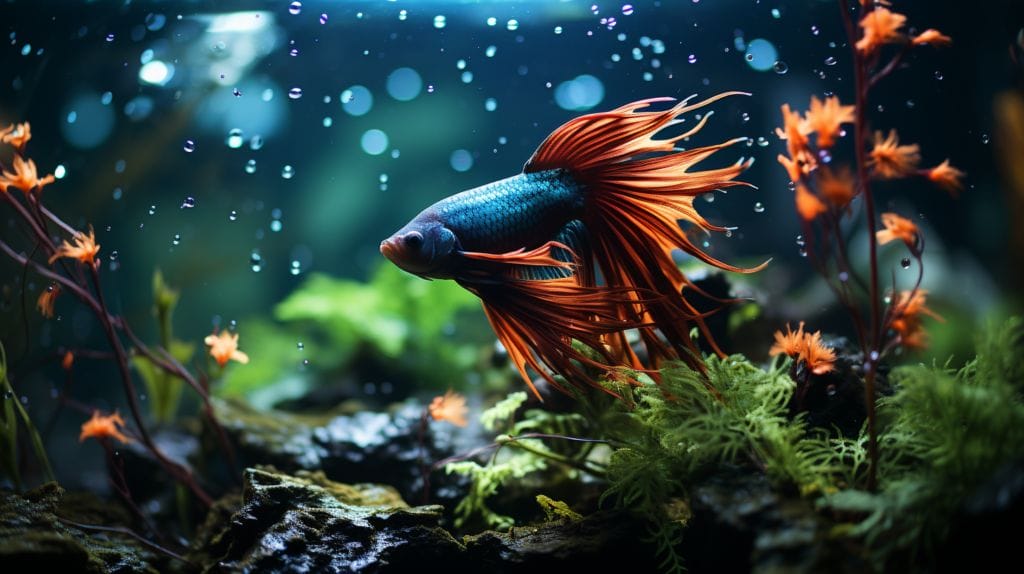
For those passionate about creating a thriving ecosystem for their betta fish, understanding how to properly introduce and maintain live plants in their tank is essential. Let’s dive into some practical tips that will ensure your aquatic plants and hardy plastic plants flourish, ensuring they stay vibrant under your chosen aquarium light.
First, we’ll gently introduce new plants to the tank. Make sure to quarantine them first to prevent any potential disease spread.
Then, we’ll focus on the essential care and maintenance for these plants, helping each plant to grow in your aquarium whether they are on the top of the tank or nestled amongst others. Regular trimming, proper lighting, and correct water temperature are pillars of success.
If you notice any challenges like browning banana plant leaves or slow growth, don’t panic. Understanding what the plants need is part of the learning curve. We’ll troubleshoot the issue, adjust the conditions, and get back on track.
Enhancing Your Betta Tank Aesthetics with Plants
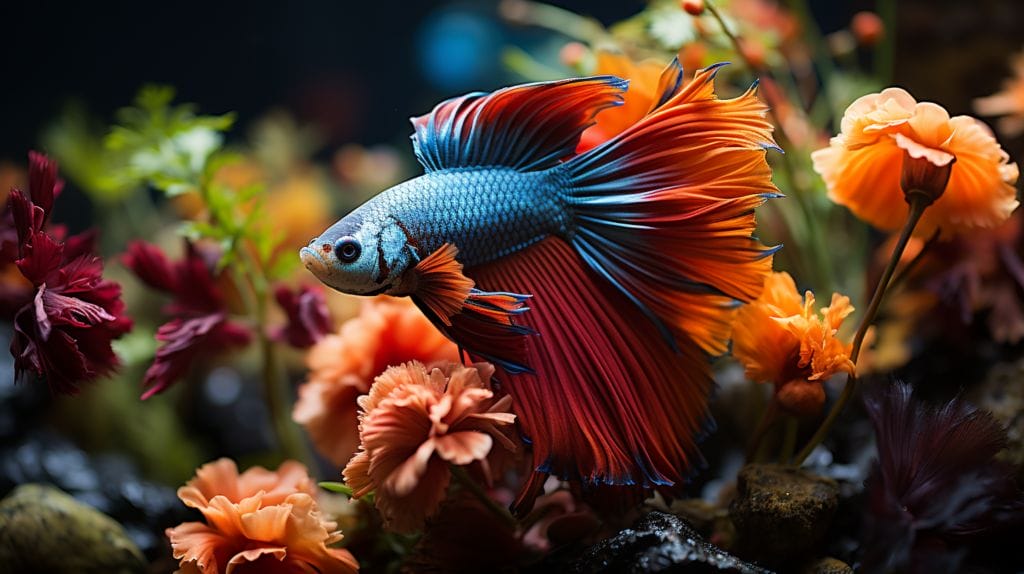
Having established the importance of plant care in a betta fish tank, let’s shift our attention to the aesthetics, exploring how to design an eye-catching aquarium with live plants. For us betta fish owners, enhancing your betta tank aesthetics with plants is more than a hobby, it’s a creative outlet that provides an unrivaled sense of accomplishment.
When you’re adding plants to your tank for your aquarium hobby, consider the natural habitat of betta fish and opt for plants suitable for betta fish tanks. These creatures are native to the rice paddies, canals, and floodplains of Asia, so mimic this environment by choosing a variety of plant types and sizes.
Position the plants in your aquarium to create depth and visual interest, keeping taller plants at the back and smaller ones at the front. This arrangement not only makes the tank look more appealing but also gives your betta plenty of room to swim and hide.
Can Elephant Ear Fighter Fish Thrive in an Aquarium with Betta Fish?
Yes, elephant ear fighter fish can thrive in an aquarium with betta fish as long as they receive comprehensive care for elephant ear fighter fish. It’s important to provide a suitable environment, proper nutrition, and space for these fish to coexist peacefully. Regular monitoring and maintenance are key to a harmonious tank.
Conclusion
In wrapping up, we’ve learned that live plants, plastic plants, or quality silk plants are crucial for a thriving betta fish tank. Choosing the right plant is key, with anubias, java fern, and java moss topping the list.
With proper care, these plants can flourish, enhancing not only the health of our bettas but also the aesthetics of our tanks.
So, let’s embrace these natural water purifiers, also considering plastic plants to add a unique look, and create a beautiful, vibrant habitat for our betta fish with suitable aquarium light.
Frequently Asked Questions
What are the best plants for betta fish?
Some of the best plants for betta fish, thriving with enough nutrients and nestled in top-quality gravel, include Java fern, Anubias, Amazon Sword, and Java moss. These plants are easy to care for and can thrive in the same water conditions as betta fish.
Why should I consider adding live plants to my betta fish tank?
Live plants offer numerous benefits to betta fish tanks. Live aquarium plants help maintain water quality by absorbing nitrates, provide cover and resting spots on lily pads for bettas, and plants make a natural and aesthetically pleasing environment for your fish.
Are there any specific plants that betta fish particularly enjoy?
Betta fish are known to enjoy resting on broad-leaved plants like Anubias and Amazon Sword. These plants, like the surface-suitable banana plant, provide a comfortable resting spot near the water surface, allowing bettas to access air easily.
Can I keep real plants in my betta aquarium if they require low light?
Yes, there are several low-light real plants that can thrive in a betta aquarium, such as Java fern, Anubias, and Java moss. These plants require minimal light and are suitable for betta tanks.
What are the advantages of keeping live plants in a betta fish tank?
Live plants not only improve the aesthetics of the tank but also help create a natural ecosystem, regulate water quality, and provide hiding spots and resting areas for betta fish, leading to a healthier and happier environment.



